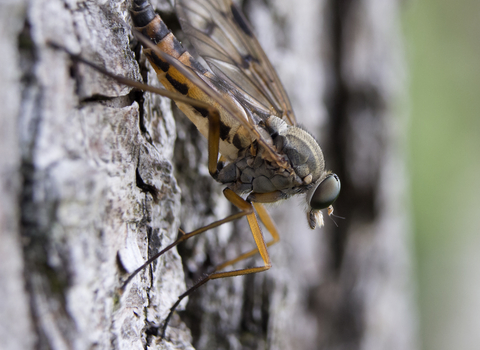
Downlooker Snipefly ©Chris Lawrence
Downlooker snipefly
The Downlooker snipefly gets its name from its habit of sitting on posts or sunny trees with its head facing down to the ground, waiting for passing prey. It prefers grassland, scrub and woodland habitats.
Enw gwyddonol
Rhagio scolopaceusPryd i'w gweld
May to AugustGwybodaeth am rywogaethau
Categori
Ystadegau
Length: up to 1.6cmCommon.
